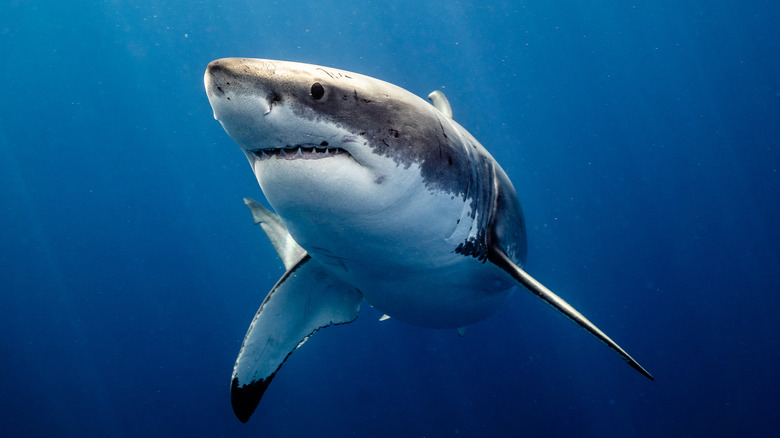White Shark Cafe: Why Sharks Travel To This One Spot
There's a spot in the Pacific Ocean between Hawaii and Mexico where great white sharks hang en masse. This is the White Shark Cafe, and it's not the plot of a fictional story – it's a real place. Originally discovered 14 years ago by Stanford marine scientist Barbara Block, this year a team of researchers took the plunge to see what was up – or down, rather.
Every December of every year for the past 14 years (at least), there's been a massive meeting of great white sharks in the Pacific Ocean. Almost like they were holding an annual get-together to plan on how to remain ferocious enough to be shown in feature films in Hollywood. Scientists from Stanford University and the Monterey Bay Aquarium in CA, USA, led an expedition this year to this shark-centric gathering.
Throughout the months of April and May of this year, researchers tracked a large number of great white sharks as they moved through their White Shark Cafe adventure. "The story of the white shark tells you that this area is vitally important in ways we never knew about," said one of the expedition leaders, Salvador Jorgensen (also research scientist for the Monterey Bay Aquarium.) "They are telling us this incredible story about the mid-water, and there is this whole secret life that we need to know about."
Data was collected over the course of two months (plus several more months of basic tracking). Research was centered approximately 1,200 nautical miles east of Hawaii.
"It's the largest migration of animals on Earth—a vertical migration that's timed with the light cycle," said Jorgensen. "During the day they go just below where there is light and at night they come up nearer the surface to warmer, more productive waters under the cover of darkness."
Sharks in the White Shark Cafe area dove down to around 1,400 feet below the surface during the day. This is right around the point at which no light reaches even at mid-day. At night, sharks moved back upward, toward 650 feet below the surface. At the point at which the darkness begins, sharks find light-sensitive creatures like bioluminescent lantern fish, as well as bigeye tuna, blue sharks, and mako sharks. It's not yet clear exactly what the sharks are doing at these depths. The real question might not be what they're doing, but what they're eating: Why did they swim all this way just to munch a snack?
Scientists haven't yet fully analyzed all data collected earlier this year. Certain questions remain. One has to do with V-shaped dives performed by great white sharks in the White Shark Cafe area during the month of April. Males were seen to perform this odd maneuver "as many as 140 times a day," and it's currently unclear why. Maybe bobbing for sea-apples?
"We now have a gold mine of data. We have doubled the current 20-year data set on white shark diving behaviors and environmental preferences in just three weeks," said Block (in the present, also part of this new research team.) "[This] will help us better understand the persistence of this unique environment and why it attracts such large predators."
To view raw data from this project, see "Cruise FK180420 on RV Falkor" via Rolling Deck to Repository [DOI = 10.17616/R39C8D]. An abundance of information can also be found at the site Voyage to the White Shark Cafe.
At Voyage to the White Shark Cafe, the project team has not only information about the area and the migration, but data on individual sharks, too. They've named quite a few of these sharks, with names like Nell, Josh, Eugene, Elmo, Dannyboy, Sweet T, Hank, and Tom Johnson. FUN FACT: Tom Johnson is the "oldest and longest studied white shark in the world." He was first found near the Farallon Islands in 1987 and was tracked for decades with several electronic tag technologies. He's outlived several! He was also, according to the project above, one of the first sharks to show Block that the White Shark Cafe existed!
